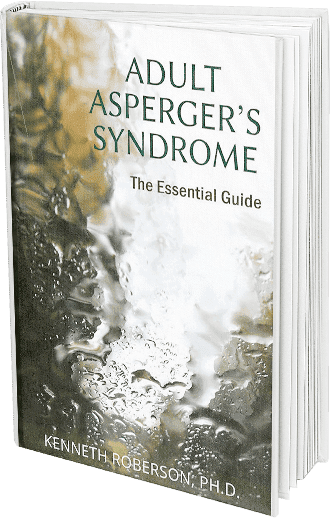
Navigating a relationship where one partner is on the autism spectrum and the other is neurotypical can be both challenging and enriching. Neurodiverse couples often face unique communication hurdles, but with the right strategies, they can foster a deep, understanding, and resilient bond. In this article, we’ll delve into effective communication techniques that can significantly enhance emotional regulation within autism-neurotypical relationships, aiming to not only inform you but also boost your confidence in your relationship’s potential.
Understanding Emotional Regulation in Neurodiverse Couples
Emotional regulation in autism-neurotypical relationships refers to the process through which individuals influence their emotions, how they experience them, and how they express them. It plays a pivotal role in the dynamics of any relationship. However, its complexity is magnified in neurodiverse couples, where one partner is on the autism spectrum, and the other is neurotypical. The intersection of differing neurological experiences creates unique challenges as well as opportunities for profound understanding and connection.
In neurodiverse relationships, the autistic partner may experience emotions intensely or may struggle to identify and express their feelings in ways that are traditionally expected. Neurotypical partners, on the other hand, might interpret emotional expressions through a conventional lens, potentially leading to miscommunications and emotional disconnects. Consequently, emotional regulation in these relationships isn’t just about managing emotions individually but also about navigating these differences collectively, with empathy and understanding.
Building emotional resilience, therefore, becomes crucial. Emotional resilience refers to the ability to adapt to stressful situations or crises, and in the context of neurodiverse couples, it’s about developing the capacity to navigate the emotional ebbs and flows that come with differing neurological experiences. It involves understanding not just one’s own emotions but also the partner’s, and finding adaptive ways to respond to and support each other. This resilience empowers couples to face misunderstandings and conflicts with a constructive approach, ultimately strengthening their bond.
Moreover, nurturing emotional resilience in neurodiverse couples is about more than just weathering storms; it’s about creating an environment where both partners feel safe, valued, and understood. It means developing strategies and practices that honor both partners’ emotional experiences, facilitating open communication, and fostering a deep, empathetic connection. This doesn’t imply that the journey is devoid of challenges, but rather that these challenges can be met with a shared commitment to understanding and growth.
The Role of Effective Communication
Communication is the bedrock of any strong relationship, but it holds even greater significance in neurodiverse partnerships. Misinterpretations and miscommunications can lead to emotional dysregulation, affecting the relationship’s harmony. Effective communication techniques not only help in conveying thoughts and feelings clearly but also in understanding and regulating emotions, fostering a healthier and more resilient relationship.
Embracing Directness and Clarity
One of the most important communication strategies in autism-neurotypical relationships is to be direct and clear. Ambiguity can often lead to confusion or misinterpretation. Neurotypical partners might need to practice being more explicit about their needs and emotions, while autistic partners might benefit from explaining their thought processes and reactions in a straightforward manner. This mutual effort towards clarity reduces the chances of misunderstandings and builds a stronger emotional connection.
Establishing Emotional Signposts
For many autistic individuals, identifying and communicating emotions can be challenging. Establishing emotional signposts involves creating a shared language or symbols that represent different feelings or needs. This could be as simple as using color codes, emojis, or specific phrases that convey emotional states. Such strategies can help both partners communicate their emotions more effectively, facilitating better emotional regulation and understanding.
Implementing Scheduled Check-Ins
Consistency can be comforting in neurodiverse relationships. Scheduled check-ins provide a structured opportunity for both partners to share their feelings, discuss any issues, and acknowledge positive aspects of their relationship. These regular conversations can preempt misunderstandings and ensure that both partners feel heard and valued, contributing to emotional resilience.
Prioritizing Active Listening
Active listening is a critical component of effective communication. It involves fully concentrating on what is being said rather than passively hearing the message of the speaker. For neurotypical partners, this means listening to understand the unique way their autistic partner experiences and expresses emotions. For autistic partners, it involves trying to grasp the emotional subtext behind their neurotypical partner’s words. Active listening fosters empathy and mutual respect, which are key to nurturing emotional resilience in neurodiverse couples.
Embracing Non-Verbal Communication
Non-verbal cues, such as facial expressions, gestures, and tone of voice, play a significant role in communication. However, these cues can sometimes be misinterpreted or missed entirely, especially by individuals on the autism spectrum. Couples can work together to understand and respect each other’s comfort levels with non-verbal communication and find alternative ways to express affection and support. Explicit verbal communication and clear physical signals can help bridge the gap, enhancing emotional regulation and connection.
Fostering Emotional Resilience in Neurodiverse Couples

In the landscape of neurodiverse relationships fostering emotional resilience transcends the mere management of challenging moments. It embodies the cultivation of a deeply rooted strength and understanding that propels the relationship toward growth, harmony, and mutual fulfillment. Emotional resilience in this context is not just an individual’s ability to bounce back from difficulties; it is a collective journey towards building a resilient bond, capable of withstanding the complexities inherent in neurodiverse partnerships.
To build emotional resilience within neurodiverse couples, it is essential to embrace a holistic approach that encompasses empathy, communication, and mutual support. This involves a commitment to understanding the world from each other’s perspectives, acknowledging that the way one partner processes and expresses emotions may be profoundly different from the other. It requires a conscious effort to navigate these differences with sensitivity, patience, and openness.
One of the cornerstones of building emotional resilience is the development of effective communication strategies tailored to the unique needs of the relationship. This includes establishing a common language or signs for expressing emotions, implementing regular check-ins to share feelings and address concerns, and practicing active listening to ensure both partners feel heard and understood. Such communication practices not only aid in the immediate management of emotional dysregulation but also contribute to a deeper understanding and connection between partners.
Moreover, nurturing emotional resilience involves creating a supportive environment that celebrates each partner’s strengths while providing compassion and understanding for their challenges. It means recognizing that the diversity in neurological experiences can offer a richness to the relationship that, when embraced, leads to a more profound connection. This supportive environment fosters a sense of security, where both partners feel safe to express their true selves, share their vulnerabilities, and work together towards common goals.
Ultimately, fostering emotional resilience in neurodiverse relationships is about more than just surviving challenges; it’s about thriving together. It involves a continuous journey of learning, adaptation, and growth, where both partners are committed to building a relationship characterized by mutual respect, understanding, and love. By prioritizing emotional resilience, neurodiverse couples can forge a bond that is not only robust in the face of adversity but also rich in compassion, understanding, and shared joy. This resilience becomes the foundation upon which a fulfilling and enduring partnership is built, offering a beacon of hope and a testament to the transformative power of love and understanding in the face of diversity.
Moving Forward Together
The path to mastering emotional regulation in autism-neurotypical relationships is ongoing and filled with learning opportunities for both partners. Embracing the strategies outlined above can lead to more harmonious communication, deeper understanding, and stronger emotional resilience. Remember, the goal is not to eliminate differences but to navigate them with empathy, respect, and love.
If you’re part of a neurodiverse couple looking to strengthen your communication and emotional regulation, you’re not alone. Contact me for a virtual consultation. Together, we can address the unique challenges, and celebrate the strengths, of your neurodiverse partnership.




